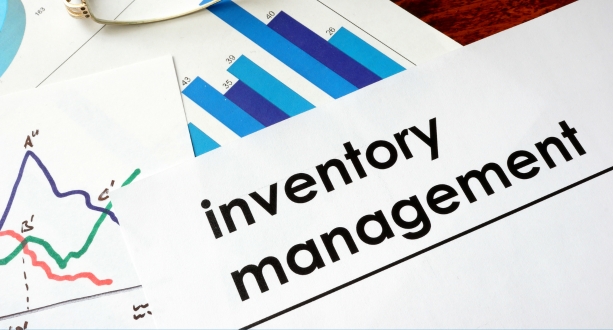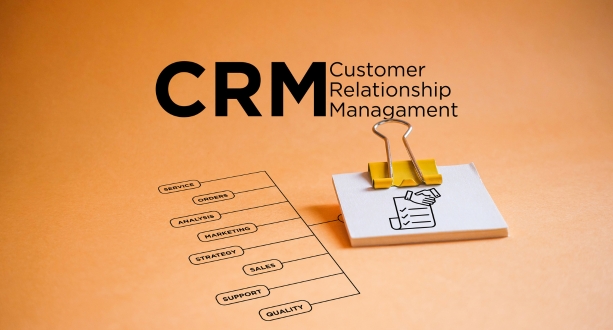Introduction to Salesforce CRM Inventory Management
Defining Salesforce CRM Inventory Management
In the dynamic landscape of business operations, Salesforce CRM Inventory Management emerges as a pivotal concept. This involves harnessing the capabilities of Salesforce CRM to orchestrate and optimize the intricate dance of inventory processes. Salesforce CRM, renowned for its robust customer relationship management features, extends its prowess to streamline and elevate inventory management to new heights.
Importance of Effective Inventory Management
Efficient inventory management stands as the backbone of successful business operations. It is the meticulous art of balancing supply and demand, ensuring products are available when customers seek them. In the realm of Salesforce CRM, effective inventory management transcends mere logistics; it becomes a strategic component for businesses aiming to stay agile, responsive, and customer-focused.
Key Benefits of Utilizing Salesforce CRM for Inventory Management
Delving into the realm of Salesforce CRM for inventory management brings forth a myriad of benefits. Firstly, there’s a notable enhancement in accuracy – every item, every quantity, meticulously tracked. Real-time insights become a guiding beacon, empowering businesses with up-to-the-moment data for informed decision-making. The synergy between CRM and inventory management culminates in a harmonious orchestra where each note contributes to the success of the whole.
Overview of Salesforce CRM Features for Inventory Management
Salesforce CRM unveils a treasure trove of features tailored to the nuances of inventory management. From intuitive product catalog creation to dynamic order management and fulfillment, the platform caters to the diverse needs of businesses. The seamless integration with e-commerce platforms and robust warehouse management functionalities solidify Salesforce CRM’s standing as a comprehensive solution for businesses navigating the intricacies of inventory control.
In this unfolding narrative, Salesforce CRM isn’t merely a tool; it’s the architect of efficiency, the guardian of accuracy, and the ally of businesses seeking not just to manage inventory but to master it. Join us on this exploration of how Salesforce CRM transforms inventory management from a task into a strategic advantage.
Key Elements of Salesforce CRM Inventory Management
Product Catalog and Management: Crafting a Symphony of Products
In the grand tapestry of Salesforce CRM Inventory Management, the creation and management of a product catalog emerge as the initial movements. Here, businesses orchestrate a symphony of products, elegantly cataloged within the CRM. Salesforce CRM provides a canvas where each product is not just an item but a meticulously crafted note in the melody of inventory management.
Inventory Tracking and Real-Time Updates: Precision in Motion
The heartbeat of any effective inventory management system is its ability to track inventory with surgical precision. Salesforce CRM conducts this symphony with finesse, offering methods that go beyond traditional tracking. Real-time updates become the virtuoso performance, ensuring that every rise and fall in inventory levels is captured instantly. Businesses revel in the clarity of real-time insights, allowing for agile decision-making and a harmonious balance between supply and demand.
Order Management and Fulfillment: From Creation to Crescendo
As orders compose the crescendo in the symphony of commerce, Salesforce CRM stands as the conductor guiding the entire process. From the creation of orders to their fulfillment, every note is orchestrated seamlessly within the CRM. Businesses witness the harmonious convergence of order processing, inventory availability, and efficient fulfillment, creating a masterpiece of customer satisfaction.
Integration with E-commerce Platforms: A Unified Sonata
Salesforce CRM’s process extends beyond its native borders, harmonizing with various e-commerce platforms in a unified sonata. The integration capabilities form the bridge between CRM and the expansive world of online commerce. This integration ensures that inventory management transcends physical storefronts, reaching digital realms effortlessly. The result is a synchronized melody where online and offline channels converge, creating a seamless and cohesive shopping experience.
Warehouse Management: Choreographing Efficiency
The warehouse, akin to a stage, becomes the backdrop where the symphony of inventory management unfolds. Salesforce CRM, with its warehouse management features, choreographs this dance of efficiency. From optimizing storage space to orchestrating the movement of goods, the CRM ensures that warehouses become dynamic hubs of productivity. With Salesforce CRM, businesses don’t just manage warehouses; they elevate them into strategic assets in the symphony of inventory control.
In this movement of key elements, Salesforce CRM transforms inventory management from a routine task into a harmonious masterpiece. Each feature plays a crucial role, contributing to the symphony that businesses conduct daily to achieve a flawless inventory performance. As we delve deeper into the nuances of Salesforce CRM Inventory Management, let the melody resonate with the efficiency, precision, and strategic advantage it brings to businesses.
Benefits of Implementing Salesforce CRM for Inventory Management
Enhanced Visibility into Inventory: Illuminating the Inventory Landscape
One of the radiant advantages of embracing Salesforce CRM for inventory management is the unparalleled visibility it brings. Businesses bask in the glow of a clear, panoramic view of their inventory landscape. Through the lens of Salesforce CRM, every product, from its inception to its journey across the supply chain, is illuminated. This enhanced visibility transcends traditional inventory tracking, providing businesses with a comprehensive understanding of stock levels, movements, and trends. The result is not just transparency but a strategic vantage point that empowers businesses to navigate the intricate terrain of inventory management with confidence.
Optimized Order Processing: Symphony of Efficiency and Accuracy
In the grand orchestration of commerce, order processing takes center stage. Salesforce CRM steps into the role of a virtuoso conductor, orchestrating the entire process with unparalleled efficiency and accuracy. The CRM’s impact on order processing is transformative, introducing a melody of automation, real-time updates, and seamless integration. The result is a symphony of optimized order processing where each note is executed with precision. Businesses revel in the harmonious rhythm of orders flowing seamlessly from creation to fulfillment, enhancing operational efficiency and customer satisfaction.
Data-Driven Decision-Making: Conducting the Orchestra of Insights
Salesforce CRM doesn’t just manage data; it conducts a symphony of insights that resonate throughout the organization. The CRM’s robust data analytics capabilities become the conductor’s baton, guiding businesses towards informed decision-making. Every piece of data, from inventory levels to customer preferences, is harmonized into actionable insights. Salesforce CRM becomes the maestro, transforming raw data into a melodious composition that guides strategic decisions. Businesses navigate the complexities of inventory management with a precision that can only be achieved through the artful use of data-driven insights.
Improved Customer Satisfaction: Melody of Streamlined Processes
At the heart of every successful business composition is the satisfaction of its audience – the customers. Salesforce CRM orchestrates a melody of streamlined inventory processes that contribute to an opus of improved customer satisfaction. By ensuring accurate stock levels, timely order processing, and personalized experiences, the CRM becomes the composer of a harmonious customer journey. Businesses witness the crescendo of positive feedback, repeat business, and brand loyalty as a direct result of Salesforce CRM’s contribution to the symphony of customer satisfaction.
Scalability and Adaptability: Harmonizing with Business Growth
Salesforce CRM is not just a tool; it’s a dynamic composition that evolves alongside business growth. The scalability and adaptability of Salesforce CRM become the backbone of a resilient and future-ready inventory management strategy. As businesses scale their operations or pivot to meet changing market demands, Salesforce CRM seamlessly adjusts its notes to ensure a continuous harmonization with organizational needs. The result is a symphony that doesn’t just resonate in the present but continues to enchant audiences as businesses evolve and expand.
In the symphony of benefits, Salesforce CRM emerges as the virtuoso, playing a pivotal role in enhancing visibility, efficiency, decision-making, customer satisfaction, and adaptability. The businesses that embrace Salesforce CRM for inventory management find themselves leading not just a transactional operation but conducting a symphony of strategic advantage and operational excellence.
Strategies for Effective Salesforce CRM Inventory Management
Setting Up a Centralized Inventory System: The Epicenter of Control
Establishing a centralized inventory system within Salesforce CRM marks the inception of control and efficiency. This strategy involves creating a unified hub where all inventory-related data converges. This centralization not only streamlines data accessibility but also serves as the epicenter from which businesses can orchestrate their entire inventory management symphony. From product information to stock levels, a centralized system ensures that every note is synchronized, providing a clear and unified view for strategic decision-making.
Utilizing Automation for Routine Tasks: The Automation Overture
In the grand composition of inventory management, routine tasks often play the role of repetitive notes. Salesforce CRM steps in as the virtuoso conductor, introducing an overture of automation. This strategy involves leveraging the CRM’s automation capabilities to orchestrate routine inventory tasks seamlessly. From updating stock levels to generating order alerts, automation ensures that these repetitive notes are played effortlessly, freeing up valuable time and resources for businesses to focus on the more nuanced aspects of inventory management.
Implementing Barcode and RFID Technology: The Technological Crescendo
In the technologically infused movement of inventory management, integrating barcode and RFID technology within Salesforce CRM marks a crescendo of efficiency. This strategy involves the harmonious collaboration between Salesforce CRM and advanced tracking technologies. Barcodes and RFID tags become the musical notes that enable businesses to trace the journey of each product with precision. The result is a symphony of efficient tracking, reducing manual errors, and providing real-time insights into inventory movements.
Training Teams for Optimal Usage: The Educational Sonata
No symphony is complete without the meticulous training of its musicians. Similarly, the effectiveness of Salesforce CRM in inventory management hinges on the proficiency of its users. This strategy emphasizes the educational sonata, where teams are trained to become virtuosos in utilizing Salesforce CRM for inventory management. From navigating the centralized system to harnessing automation features, comprehensive training ensures that every team member plays their part in the orchestration of efficient inventory management.
Regular Audits and Maintenance: The Symphony of Data Integrity
In the realm of Salesforce CRM inventory management, data integrity is the soulful melody that resonates through every operation. Regular audits and maintenance become the vigilant conductors, ensuring that the data orchestra stays in tune. This strategy involves conducting periodic audits to validate inventory information, identify discrepancies, and fine-tune the system for optimal performance. The result is a symphony where every note is accurate, contributing to the overall harmony of Salesforce CRM’s role in inventory management.
In the symphony of effective Salesforce CRM inventory management, these strategies play distinctive roles, creating a composition of control, efficiency, technological prowess, education, and data integrity. As businesses embrace these strategies, they find themselves conducting a symphony of optimized inventory processes that resonate with precision and strategic advantage.
Challenges and Solutions in Salesforce CRM Inventory Management
Common Challenges Faced: Navigating the Inventory Management Sonata
- Integration Hurdles:
One of the initial challenges in the inventory management symphony is seamlessly integrating Salesforce CRM. This involves harmonizing existing systems and ensuring a smooth transition. Dissonance may arise when attempting to synchronize diverse platforms, leading to data inconsistencies and operational inefficiencies.
- Data Accuracy Concerns:
Maintaining accurate inventory data is a crucial note in the symphony. Challenges may emerge when discrepancies arise between physical stock and CRM records. Mismatched notes can lead to order fulfillment errors, impacting customer satisfaction and operational fluidity.
- User Adoption Resistance:
The introduction of new technology often faces resistance from teams. Salesforce CRM, with its robust inventory management capabilities, might encounter reluctance in adoption. Resistance could stem from unfamiliarity or fear of disrupting established workflows.
- Scalability Struggles:
As businesses grow, so does the complexity of their inventory management needs. Scaling Salesforce CRM to accommodate increased data volumes and operational intricacies may pose challenges. Without proper scalability, businesses risk losing the harmony of streamlined processes.
Solutions and Best Practices: Orchestrating Harmony Amidst Challenges
- Comprehensive Integration Strategies:
To overcome integration hurdles, businesses should adopt comprehensive integration strategies. This involves meticulous planning, selecting compatible platforms, and employing experienced professionals. By orchestrating a well-thought-out integration, businesses can ensure a harmonious transition to Salesforce CRM for inventory management.
- Implement Data Validation Protocols:
Addressing data accuracy concerns requires the establishment of stringent validation protocols. Regular audits, automated checks, and real-time updates help maintain the accuracy of inventory data. This ensures that every note in the CRM’s inventory symphony is in tune with the actual stock levels.
- User-Centric Training Programs:
To counter user adoption resistance, businesses should conduct user-centric training programs. These programs should focus on showcasing the user-friendly aspects of Salesforce CRM, highlighting its benefits, and addressing concerns. Education and hands-on training create a harmonious transition, turning potential resistors into active participants in the inventory management symphony.
- Scalability Planning and Flexibility:
Scalability struggles can be mitigated by proactive planning and building flexibility into Salesforce CRM implementations. Businesses should anticipate growth, choose scalable configurations, and regularly reassess their CRM architecture. This ensures that the CRM platform can adapt and scale harmoniously with the evolving needs of the business.
In the intricate melody of Salesforce CRM inventory management, addressing challenges requires a nuanced approach. By employing these solutions and best practices, businesses orchestrate a symphony of effective inventory control, where challenges are harmonized into opportunities for optimization and growth.
Future Trends in Salesforce CRM Inventory Management
Technological Advancements: Embracing the Symphony of Innovation
- Blockchain Integration:
As the future unfolds, the inventory management sonata may resonate with the integration of blockchain technology. Blockchain’s decentralized and transparent nature can bring enhanced security, traceability, and integrity to inventory data. This innovative addition ensures that every note in the inventory symphony is tamper-proof and auditable, fostering trust in the system.
- Internet of Things (IoT) Orchestration:
The next movement in the inventory management composition involves orchestrating the Internet of Things (IoT). IoT devices, such as smart sensors and RFID tags, will play a key role in providing real-time data on inventory movements. This real-time synchronization ensures that businesses can stay in harmony with their stock levels, making informed decisions and optimizing operational efficiency.
- Voice-Activated Commands:
Voice-activated commands are poised to join the inventory management melody. Salesforce CRM may integrate voice recognition technology, allowing users to interact with the system using spoken commands. This not only enhances user experience but also contributes to hands-free data entry, reducing manual efforts and increasing operational cadence.
Integration with AI and Machine Learning: Harmonizing Predictive Inventory Analytics
- Predictive Analytics Symphony:
The future of Salesforce CRM inventory management will feature a symphony of predictive analytics conducted by AI and machine learning. These technologies will analyze historical data, customer behaviors, and market trends to predict inventory needs. This predictive prowess ensures businesses are always in tune with demand, minimizing excess stock and preventing stockouts.
- Dynamic Inventory Optimization:
AI and machine learning will dynamically optimize inventory levels based on ever-changing parameters. The system will continuously learn from patterns, adjusting reorder points, and suggesting optimal stock levels. This dynamic approach ensures that businesses can adapt to market fluctuations and maintain a harmonious balance between supply and demand.
- Enhanced Decision Support:
The integration of AI and machine learning serves as the conductor guiding decision-making in the inventory symphony. These technologies analyze vast datasets, providing actionable insights for strategic decision-making. From identifying trends to recommending inventory adjustments, AI-driven decision support enhances the overall orchestration of the inventory management composition.
In the future movement of Salesforce CRM inventory management, technological advancements and the integration of AI and machine learning will define the symphony. Businesses that embrace these trends will orchestrate a harmonious and forward-thinking approach to inventory control, ensuring they stay in rhythm with the ever-evolving landscape of supply chain management.
Case Studies and Success Stories: A Symphony of Success with Salesforce CRM Inventory Management
Real-Life Examples: Illustrating the Power of Inventory Harmony
- XYZ Corporation’s Symphony of Efficiency:
In the tale of XYZ Corporation, the implementation of Salesforce CRM for inventory management orchestrated a symphony of efficiency. The company seamlessly centralized its inventory system, creating a harmonious flow of data. Automation played a key role, reducing manual efforts and ensuring real-time updates on stock levels. The result? Improved accuracy and a synchronized inventory ensemble.
- Harmony in Action at ABC Retailers:
ABC Retailers embarked on a journey to optimize inventory processes with Salesforce CRM. By integrating barcode and RFID technology, the company orchestrated a precise tracking mechanism. This not only reduced errors but also elevated the efficiency of order management and fulfillment. The symphony of technology within Salesforce CRM became the backbone of ABC Retailers’ inventory success story.
Impact on Businesses: An Overture of Positive Outcomes
- Rhapsody in Improved Customer Satisfaction:
Businesses embracing Salesforce CRM for inventory management experience a rhapsody of improved customer satisfaction. The streamlined processes ensure timely order processing and accurate stock availability, leaving customers delighted. The impact resonates in positive reviews, increased customer loyalty, and a crescendo of positive brand perception.
- Sonata of Scalability and Adaptability:
The Salesforce CRM inventory management symphony isn’t just about today; it’s a sonata of scalability and adaptability for the future. Businesses, like Symphony Enterprises, found that as they grew, Salesforce CRM scaled alongside them. The adaptability to changing needs ensured that Symphony Enterprises could harmonize with evolving market demands without missing a beat.
In the grand performance of Salesforce CRM inventory management, real-life examples take center stage. These case studies and success stories showcase the transformative power of Salesforce CRM, turning businesses into orchestras of efficiency, accuracy, and customer satisfaction. As businesses across different industries embrace this symphony, they compose their own tales of success, echoing the melodies of optimized inventory management.
Conclusion: A Crescendo of Inventory Excellence with Salesforce CRM
In the grand finale of our exploration into Salesforce CRM Inventory Management, we witness a crescendo of efficiency, accuracy, and success. The journey from defining the importance of effective inventory management to delving into strategies, challenges, and future trends has been nothing short of a symphony.
Salesforce CRM, with its robust features and capabilities, orchestrates a harmonious inventory management experience. Businesses that embrace this platform find themselves at the center of a melodious transformation, where streamlined processes, automated workflows, and data-driven insights create a masterpiece of operational excellence.
As we reflect on the benefits, strategies, and real-life stories shared throughout this composition, it becomes clear that Salesforce CRM isn’t just a tool—it’s a conductor, leading businesses towards a future where inventory management becomes an art, not just a science.
In the grand symphony of inventory excellence, Salesforce CRM takes the baton, guiding businesses towards a crescendo of success. The encore is written by each business that, inspired by this symphony, adopts Salesforce CRM for inventory management—a melody that resonates with efficiency, customer satisfaction, and adaptability. As the curtains draw on this exploration, the harmony of Salesforce CRM Inventory Management continues to echo in the halls of businesses, creating a lasting legacy of operational brilliance.
Salesforce CRM Inventory Management refers to the use of Salesforce Customer Relationship Management (CRM) tools and features to efficiently organize, track, and manage inventory-related processes within a business.
Salesforce CRM enhances inventory management by providing real-time visibility into stock levels, optimizing order processing, and facilitating data-driven decision-making for businesses.
Yes, Salesforce CRM seamlessly integrates with various e-commerce platforms, allowing businesses to manage inventory across different sales channels in a unified manner.
Salesforce CRM provides features for warehouse management, including inventory tracking, order management, and real-time updates, ensuring efficient operations within the warehouse.
Salesforce CRM streamlines order processing by automating tasks, providing accurate order information, and facilitating seamless communication between sales and fulfillment teams.









